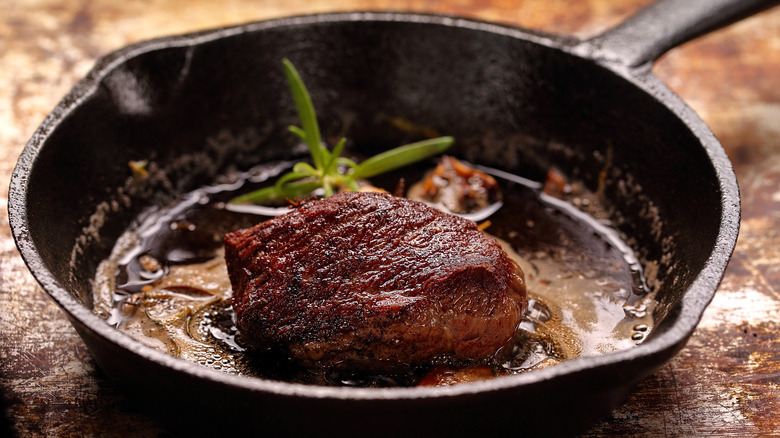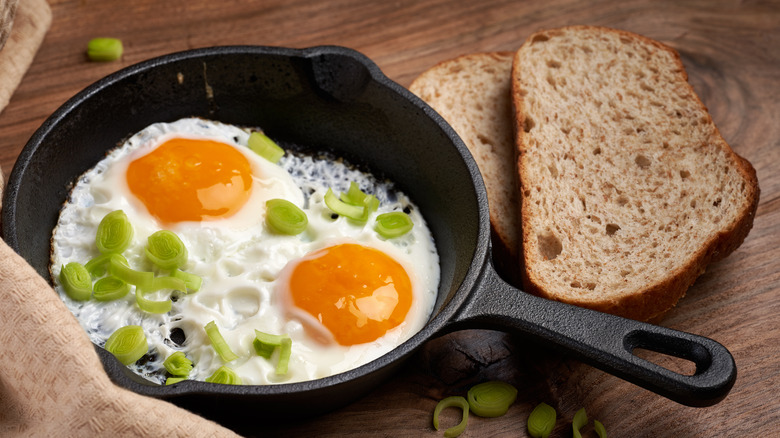Why You Should Never Soak A Cast Iron Skillet
Whether you're using them on the stove, in the oven, or over an open fire during a camping trip, cast iron skillets are an undeniably useful tool for any home cook. As America's Test Kitchen reported, cast iron skillets are unmatched when it comes to retaining heat (allowing you to get the perfect sear), last for decades, and actually improve with age and use. Plus, when well-seasoned, they have a natural ability to develop a nonstick surface. But there is one thing that stops many from incorporating cast iron pans into their day-to-day cooking routines: In order to access all of these benefits, cast iron skillets need to be cleaned and cared for in a specific way that differs from other pans.
Luckily, caring for a cast iron skillet is not as daunting as it may seem at first glance — and there's one rule in particular that will give you a great start: Simply avoid soaking your cast iron pan with water.
Why you shouldn't soak cast iron
According to The Kitchn, cast iron is a porous material, which means that despite their durability, cast iron skillets have the potential to absorb water, which causes them to rust. Unfortunately, as a result, soaking is a surefire way to end up with a rusty cast iron skillet. Similarly, you should always make sure your pan is completely dry before putting it away, as any residual water can also cause rust.
That being said, even if your cast iron pan develops rust, it doesn't mean you need to throw it away: Part of what makes cast iron so long-lasting is its ability to be restored. According to cookware brand Lodge Cast Iron, you can revive your skillet by using steel wool to scrape away any rusty areas. Once the rust has been removed, wash the pan with soap and warm water before drying it thoroughly. The last step is re-seasoning your pan: Spread a very thin layer of cooking oil all over the surface of your skillet, bake it at 450 to 500 degree Fahrenheit and let it cool in the oven.

